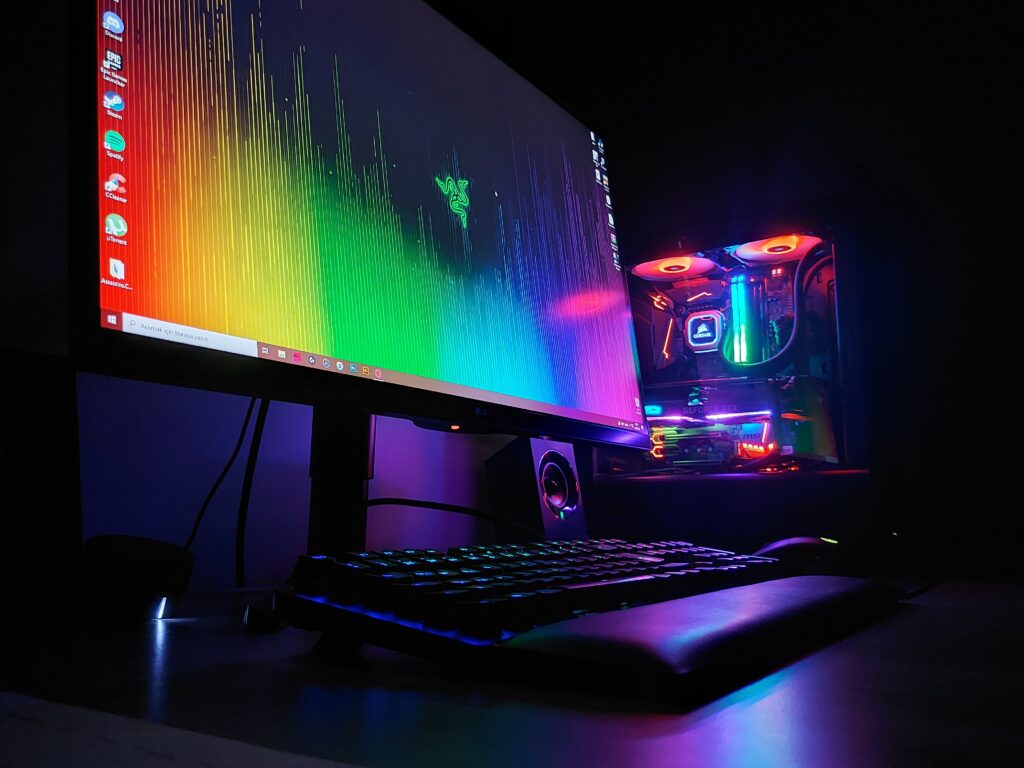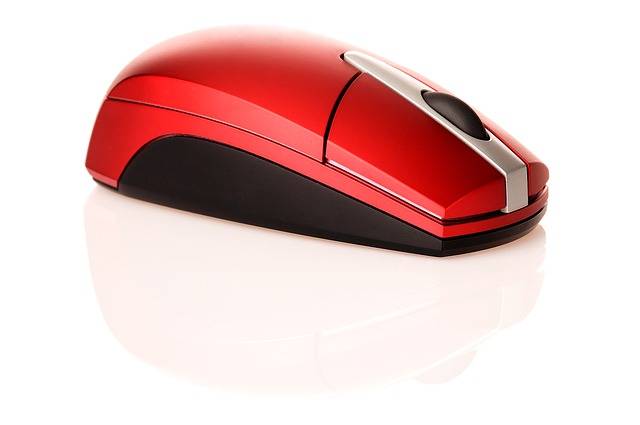Computer Parts Explained: What Is Inside Your Device
If you’re new to computers, (or even if you’re not and you just don’t have much interest in tech details!) you probably refer to all your computer components collectively, as “a computer.”
The screen, the keyboard, the big boxy thing with all its magical techno-innards; they all get lumped into that big general and fuzzy term, “computer.” And, you know what? For the most part, this is perfectly fine! People will know what you mean.
Occasionally, though, it can help to get a little more specific. For example, if something is going wrong with your technology, it’s helpful to know the names of individual components in order to better describe the problems you’re encountering.
When doing the computer parts explained article, it is important to run through each key component. Let’s run you through the individual parts of a computer. We’ll describe what each part of your computer does, what it looks like, and where you’ll find it. Here are basic computer parts explained:
Get your very own Nerd On Call!
Computer Parts Explained: The Monitor
Let’s start with possibly the easiest part of a computer to recognize — the monitor.

The monitor serves as the primary interface between you and your computer, providing a visual display of all the information processed and generated by your system. Whether you’re browsing the web, watching videos, working on documents, or playing games, the monitor is where you interact with your computer’s output.
Despite its critical role in user interaction, it’s important to recognize that the monitor is essentially a passive output device. Unlike the CPU or GPU, it doesn’t perform any computational tasks or processing of its own. Instead, its sole function is to receive signals from the computer and translate them into images that you can see.
Think of the monitor as a window into the digital world created by your computer. It faithfully reproduces the visual content sent to it, whether it’s text, images, videos, or graphical user interfaces. The quality of the display, including factors like resolution, color accuracy, and refresh rate, greatly impacts your overall computing experience.
In essence, the monitor acts as a conduit for visual information, faithfully presenting the output generated by your computer’s hardware and software. It’s the gateway through which you interact with digital content, making it an indispensable component of any computer setup.
Computer Parts Explained: The Tower
When going through this “Basic Computer Parts Explained” article, this part of your computer it the biggest and most obvious. If you own a desktop PC, it’s likely the various parts of your computer are housed neatly in a tidy vertical case, known as a tower.
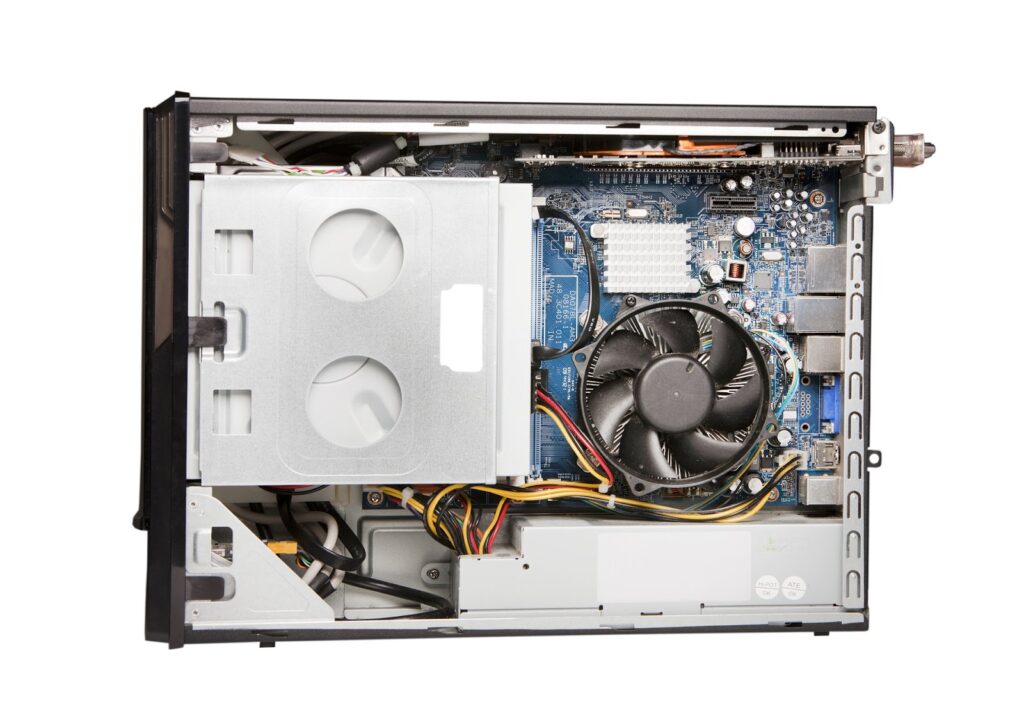
A tower is basically a hard protective case for your computer’s various components. It will typically have an on switch on the front, along with several ports you can use to plug in a variety of cables (which is a whole separate topic in itself).
Again, you probably need to understand that your tower isn’t one big lump of technology. It’s simply a protective casing surrounding various components which, when combined, make up your computer.
Computer Parts Explained: The Processor
Now we are getting into the inners of Computer Parts Explained. The Central Processing Unit (usually referred to as the CPU) a four-square-inch chip inside your computer that has millions of transistors, each of which can perform a mathematical operation.
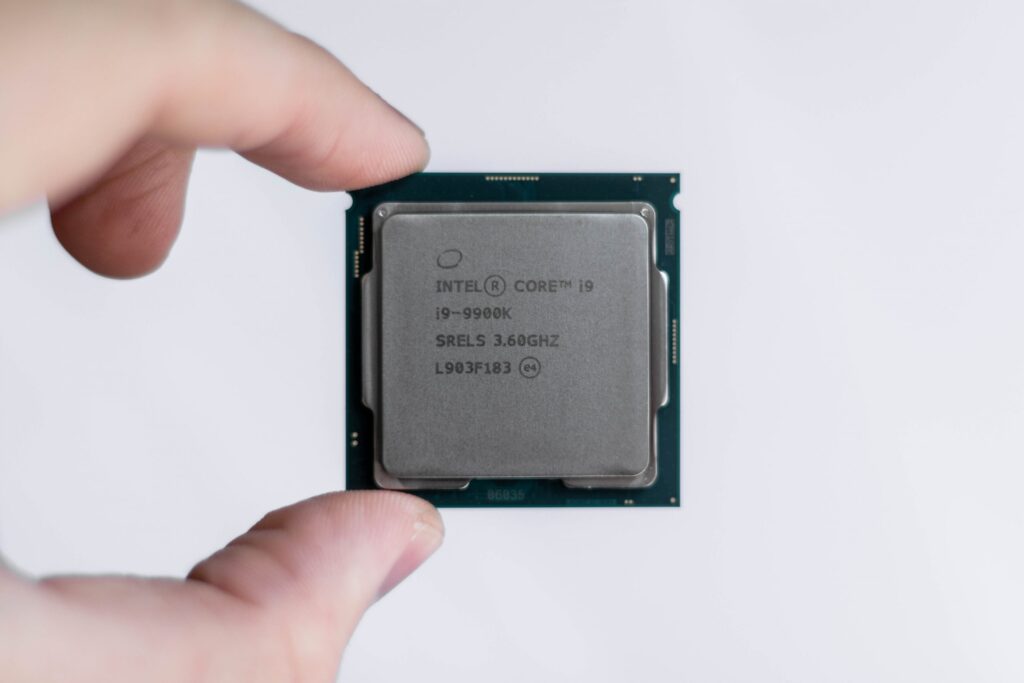
The CPU is the Central Processing Unit. Your computer’s CPU is pretty much the brain of your computer. It’s the part of your computer which does the “thinking,” in the form of millions of calculations every second. These days, CPUs are actually made up of a number of “cores” which can work together.
Generally speaking, the more powerful your CPU and the more cores it has, the faster your computer will perform.
Computer Parts Explained: The Memory
While your computer’s CPU is fast, it doesn’t store data. This is where your computer’s memory comes into play.
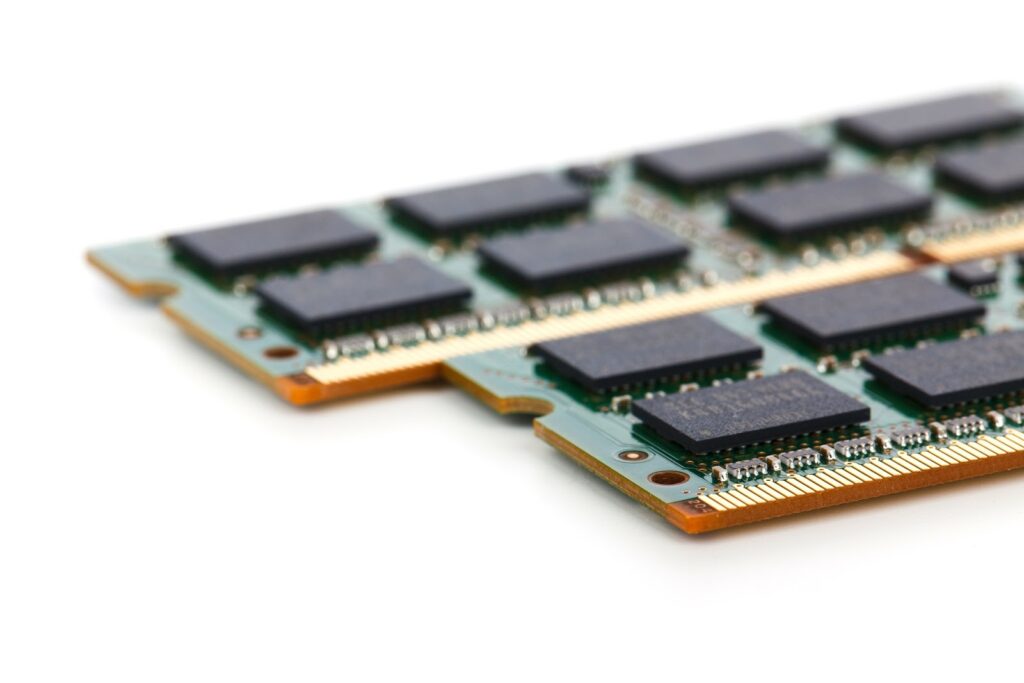
There are two parts of your computer which are responsible for memory. Let’s look at random access memory (or RAM) first.
RAM is a small stick of plastic circuitry with a number of contacts along one edge. It plugs directly into your computer’s motherboard (the big base of circuitry which all the other parts of a computer plug into).
Your computer’s RAM is a bit like your own short-term memory. It contains everything a computer is thinking about right now. It’s a holding spot for the most relevant and useful information a computer needs in any given moment.
Computer Parts Explained: The Hard Drive
Now going through all this Basic Computer Parts Explained, this component is probably the one you heard the most about. The hard disk drive (HDD), on the other hand, is the part of your computer responsible for “long-term” memory.
Hard drives use magnetic storage to write data “persistently.” By persistent, we mean that if you turn your computer off, the data will still be stored on the hard drive and ready to access once you power it back on.
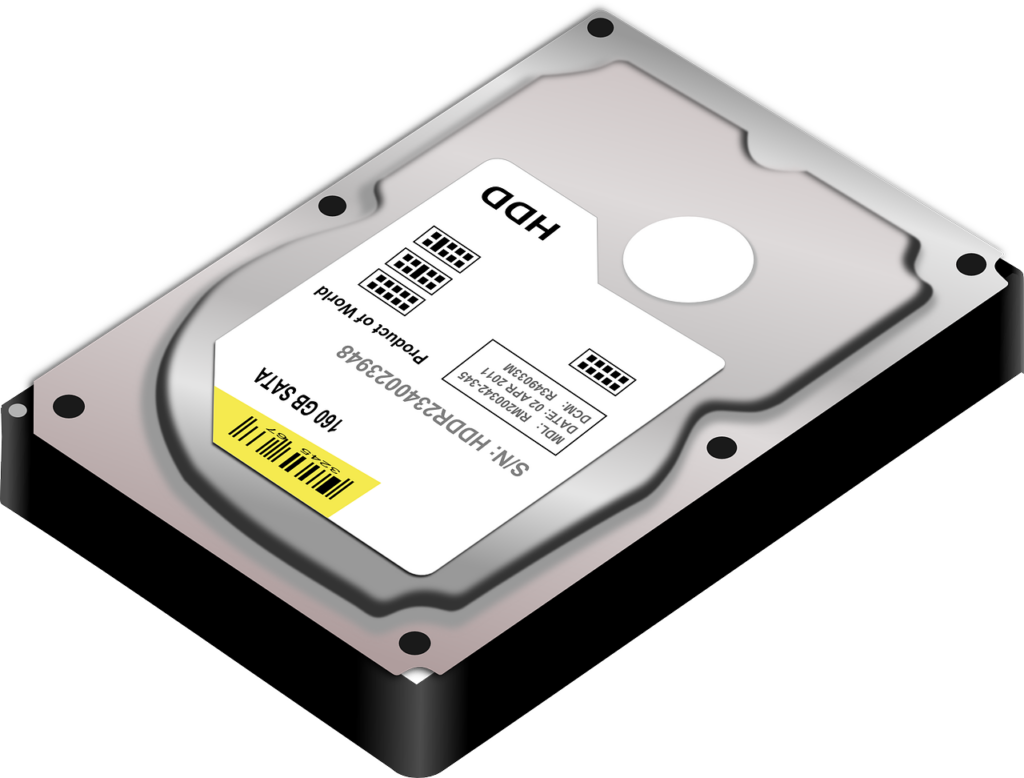
Imagine your computer’s Hard Disk Drive (HDD) as the freezer compartment of your refrigerator. Just like the freezer stores items for the long term, the HDD is where your computer stores all the data it “knows” but isn’t currently actively using. This includes your operating system, applications, documents, photos, videos, and more.
However, accessing data from the HDD is slower compared to retrieving it from Random Access Memory (RAM), which is akin to the refrigerator compartment. RAM acts as the working memory of your computer, where it stores data that is actively being used or processed by the CPU (Central Processing Unit).
When you open a program or file on your computer, it’s like taking an item out of the freezer and placing it in the refrigerator for immediate access. Similarly, when you close the program or finish working with a file, it’s like putting the item back in the freezer for long-term storage.
Now, the CPU can be likened to the food processor in your kitchen. It’s where the actual “processing” or computation takes place. When you’re actively working on tasks or running programs, the CPU fetches data from the RAM, processes it, and then stores the results back in RAM for quick access.
In summary, the HDD serves as the long-term storage repository for your computer, holding vast amounts of data that aren’t immediately needed. When you want to work with that data, it gets transferred to the faster RAM for processing by the CPU, much like how items move between the refrigerator and food processor in your kitchen.
Upgrading your hard drive to a solid-state drive (SSD) is becoming very common. SSDs provide faster performance and more reliable storage. Upgrading to an SSD is very simple too.
Computer Parts Explained: The Video Card
This computer component is the most important for PC gamers. The Graphics Processing Unit (GPU or “video card”) handles everything that goes to your monitor.
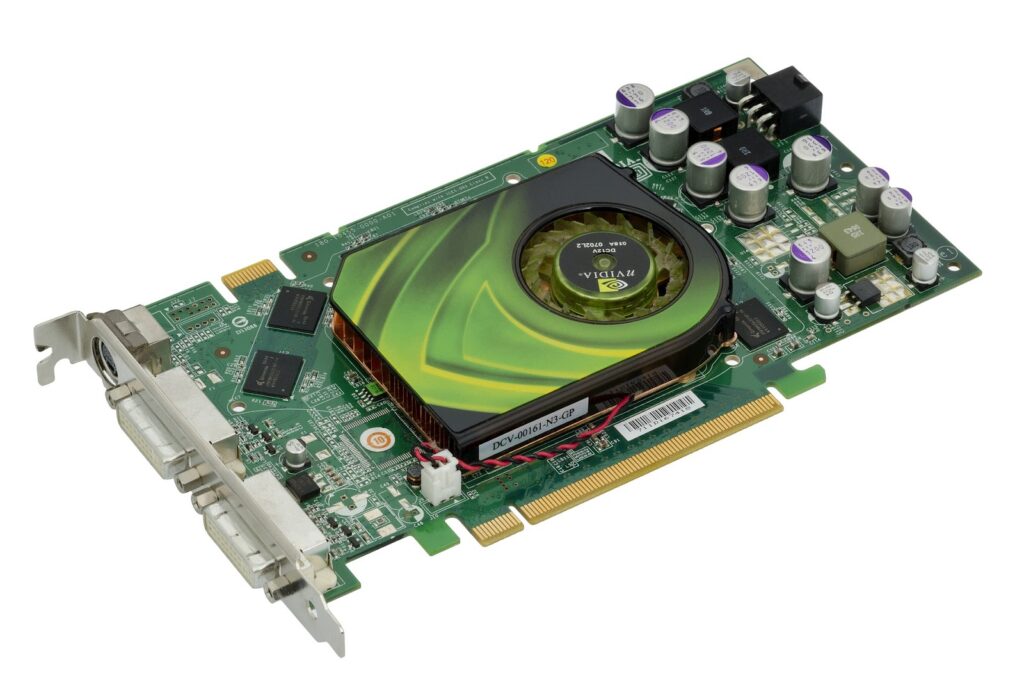
The Graphics Processing Unit (GPU), also known as the “video card,” is a crucial component responsible for handling all visual output displayed on your monitor. Whether you’re streaming a high-definition video or immersing yourself in a graphics-intensive video game, the CPU transfers this data to the GPU for processing. Unlike the CPU, which performs various general computing tasks, the GPU is specialized in handling graphics-related operations.
Investing in a more powerful video card may not directly enhance the performance of tasks like word processing or browsing the internet. However, it can significantly improve the visual experience, particularly in scenarios where you encounter issues such as video playback stuttering or freezing. A robust GPU can efficiently render complex graphics, ensuring smoother and more seamless video playback, gaming experiences, and graphic design tasks. Therefore, while a powerful video card may not directly impact everyday computing tasks, it plays a vital role in enhancing visual performance and overall user experience during graphics-intensive activities.
Computer Parts Explained: The Router
Your modem or router isn’t a part of your computer. So why is it part of the “Basic Parts Explained” article? Well, it acts as a gateway to the Internet.
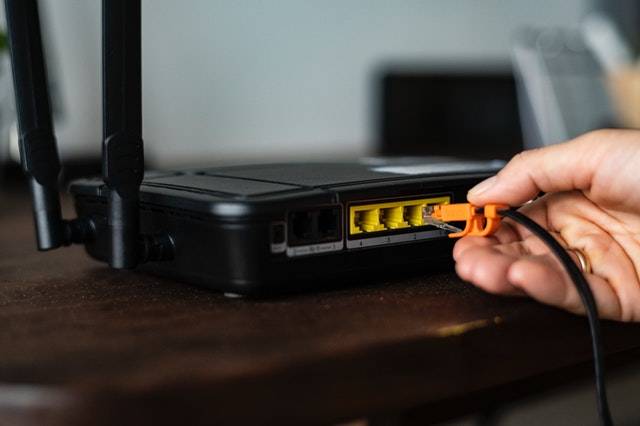
Just as electricity needs to undergo transformation before it can be utilized within a household, the vast expanse of the internet requires filtration and conversion before the average user can harness its capabilities. Internet access comes in various forms, including cable, DSL (Digital Subscriber Line), fiber-optic, or satellite connections, each with its own infrastructure and delivery method.
At the heart of this process lies the modem or router, acting as the intermediary between the incoming raw signal and your computer. Think of it as the translator and organizer of internet data, ensuring that it is presented in a standardized format that your devices can understand and interact with seamlessly.
When you connect to the internet through your modem or router, it takes the raw signal received from your internet service provider (ISP) and converts it into a usable format for your computer or other connected devices. This conversion process involves translating the complex signals transmitted over the internet into a language that your devices can interpret, allowing you to browse websites, stream videos, send emails, and engage in various online activities.
In essence, the modem or router acts as the gateway to the digital realm, transforming the vast and intricate network of data into a user-friendly interface that empowers individuals to navigate and interact with the internet with ease and efficiency.
While there are many more small components inside your computer, if you at least know what these parts of a computer are, you’re in a good position to understand your computer’s basic workings. And of course, if you have any questions, you can always call a friendly nerd at 1-800-919-6373.
Nerd Note: If you ever need one of these computer parts repaired, visit our Nerds On Call Computer Repair Sacramento shop or contact us here!
Like This? We have more!
Sign up below to be kept in the loop and be sent more content like this in the future!
